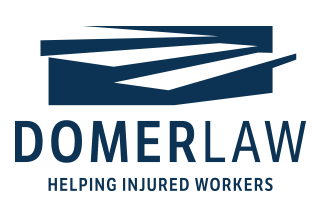A back injury suffered on the job can have long ranging symptoms that may affect your ability to work. A workers’ comp lawyer can answer questions about a claim and assist with the filing process.
The spine is made up of 24 vertebrae, which sit on top of each other forming a column. Providing a cushion between each vertebra is a soft gel-like cushion that keeps the bones from rubbing. Then ligaments and tendons connect bones and muscles. The spine is one of the most complex parts of your body. A hip or shoulder injury may even cause back pain as tendons and nerves are stretched and pinched.
A workplace back or neck injury can limit activities and even affect a career. Professions that involve lifting are numerous. A delivery driver who slips and trips while carrying an awkward package up stairs could suffer a back injury which takes years to heal. Lifting children or the aged in the care giving and nursing fields also can cause injuries that may happen little by little over time.
Corporate jobs involving days spent in front of a computer screen also cause back injuries. Poor posture and typing strain the back. Over the long term, it can result in permanent damage to the ligaments.
A Wisconsin worker’s compensation injury can occur from either a traumatic event (example: lifting a box and feeling a pull in your back) or from a worker’s occupational exposure over time. No minimum period of work time is required for a worker’s job duties to affect their back. Wisconsin law only requires that the job duties be a material contributory causative factor in the onset or progression of a worker’s back condition. A worker’s exposure to certain activities at work can be just as devastating as a traumatic incident.
One in ten suffer back pain
A recent study published in the Annals of Rheumatic Diseases noted that lower back pain was the number one cause of job disability. The National Institute of Neurological Disorders and Stroke estimates that Americans spend $50 billion a year treating lower back pain.
Treatment of chronic back pain is not always successful. The application of heat or ice along with a pain killer may be enough to treat a minor sprain. Massage, physical therapy and acupuncture may also provide relief. Opioid pain medications, neurotransmitters or drug pumps may be needed when pain is severe.
When conservative measures fail to relieve pain, surgery may become necessary. Surgery might also be indicated with compressed spinal nerves, bulging or herniated disks or a broken bone.
Following lifting basics can avoid injury
Holding even a light object for a long time can increase the risk of a back or shoulder injury. Repeatedly lifting heavy objects without a break can also stress muscles. Awkward postures can easily lead to an injury.
For anyone who needs to lift frequently, it is important to keep the item close to the body, lift with the legs and bend at the knees. Minimize bending by placing heavy objects on shelves or tables. Try to avoid twisting the torso while lifting. Employers can conduct training on proper lifting.
Report an injury if hurt or feeling pain at work
Because back injuries often occur over time, report any incident of pain, tingling, numbness or aching to your employer. Seeing a doctor right away with a strain, sprain or injury will limit further damage. A doctor may also provide guidance about tasks that should not be completed during a recovery period.
If an injury affects your ability to work, an experienced workers’ compensation attorney can answer questions you have about the claims process. A lawyer can also help when an employer’s insurer questions whether an injury occurred on the job or denies a claim.


